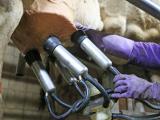Jan 11, 2011
H5N1 hits Bangladesh poultry farm
Animal health officials in Bangladesh yesterday reported an H5N1 outbreak at a poultry farm near Dhaka, the country's capital, according to a report to the World Organization for Animal Health (OIE). The outbreak began on Jan 1, killing 530 birds. The remaining 5,970 poultry were culled to stop the outbreak. An investigation into the outbreak hasn't identified a source. Bangladesh's last H5N1 outbreak in poultry occurred in May 2010. The disease was first detected in Bangladeshi poultry in 2007, and since then officials have reported 355 outbreaks, most of them at commercial farms.
Jan 10 OIE report
Trauma cited as likely cause of mysterious bird deaths in 2 states
Blunt trauma was probably what killed several thousand red-winged blackbirds in Arkansas on New Year's Eve and hundreds of birds in Louisiana on Jan 3, the US Geological Survey (USGS) announces yesterday. News reports said an estimated 5,000 blackbirds fell from the sky in Beebe, Ark., on New Year's Eve, and about 500 blackbirds and starlings were found dead Jan 3 along a highway between New Roads and Morganza, La. Scientists at the USGS National Wildlife Health Center in Madison, Wis., analyzed carcasses and concluded that the birds probably died of impact trauma, which is the same conclusion reached by Arkansas wildlife officials, the USGS said. The Arkansas experts concluded that loud noises startled the birds and caused them to fly into obstacles such as houses and trees. A Jan 4 Reuters story mentioned fireworks or severe weather as possible sources of the noise that scared the Arkansas birds. Jonathan Sleeman, director of the USGS center in Madison, commented that wildlife die-offs are not all that unusual: in 2010 the agency documented eight die-offs of 1,000 or more birds, from causes that included starvation, avian cholera, Newcastle disease, and parasites.
Jan 10 USGS press release
Jan 4 Reuters story
Officials say China needs to move to pathogen-based surveillance
China's ability to detect and respond to disease outbreaks has made healthy strides since SARS and avian flu, but it needs to move toward US-style pathogen-based surveillance, according to a Health Affairs commentary. The commentary—by Zijian Feng, the director of the Office of Disease Control and Emergency Response at the Chinese Center for Disease Control and Prevention, and two officials from the US Centers for Disease Control and Prevention (CDC)—traces China's response to SARS (severe acute respiratory syndrome) in 2003, when its outdated public health system was understaffed and slow to respond, through outbreaks of avian influenza and pandemic H1N1 2009 flu. Although billions of dollars have been spent since 2003, the experts write, "China does not have a system in which all high-priority pathogens are routinely forwarded from hospital laboratories to local centers for disease control and prevention." But the authors list several challenges to implementing pathogen-based surveillance, including encouraging sick people to use hospitals, ensuring that specimens are collected, bolstering lab infrastructure, and reinforcing health workers' understanding of their public health roles.
Jan Health Affairs abstract
Jan 10 New York Times article on the commentary
Study says early ECMO effective in severe novel H1N1 cases
Italian researchers found that extracorporeal membrane oxygenation (ECMO) was effective in treating seven pandemic H1N1 patients who had acute respiratory distress syndrome (ARDS). They studied 12 patients who had a median age of 44 and were admitted to intensive care with ARDS between Sep 9, 2009, and Jan 20, 2010. Seven underwent ECMO, which involves a heart-lung machine similar to that used during open-heart surgery. The other five responded well to protective mechanical ventilation. One ECMO patient died from a secondary Aspergillus infection, but the others recovered, including a pregnant woman who carried her child to term. The authors conclude, "Early ECMO assistance [is] safe and feasible, considering the life threatening condition, in H1N1-induced ARDS." They also reported that lung ultrasound was an effective tool for daily monitoring of ARDS patients.
Jan 11 BMC Pulm Med abstract




















